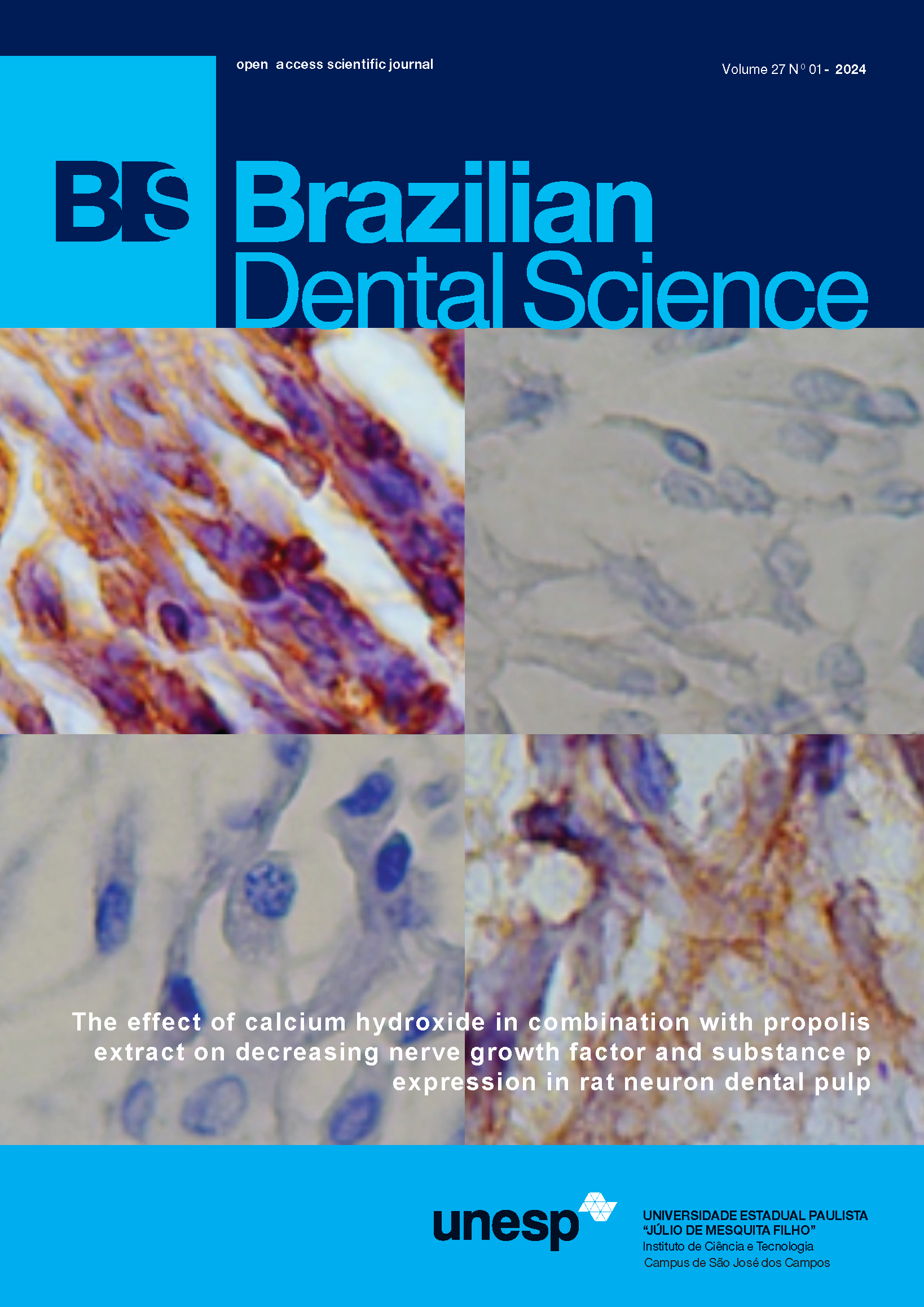Interaction between photoactivators and adhesive systems used as modeling liquid on the degree of conversion of a composite for bleached teeth
DOI:
https://doi.org/10.14295/bds.2018.v21i3.1558Abstract
Objective: This study analyzed the effect of two light emitting diodes (LEDs) on the degree of conversion (DC) of a composite resin for bleached teeth under the influence of adhesives systems used as modeling liquid. Material and methods: A total of 60 samples of IPS Empress Direct resin (Ivoclar, Vivadent) in BL-L shade were made in a single increment and polymerized for 20 seconds. The treatments were: 1) Type of adhesive used as modeling liquid (Adper Single Bond 2; the bond component of Adper Scotchbond Multi-Purpose; or no adhesive systems used as modeling liquid were used in the control group); and 2) Type of LED (Bluephase, polywave; and Coltolux, monowave). The DC, percentage of monomers converted to polymer during polymerization, was were evaluated using Fourier Transform Infrared Spectroscopy (FTIR) with 10 scans and wavenumber related to 1/? for observation of the peaks at 1608 and 1638 cm-1. Data were statistically analyzed by two-way analysis of variance (ANOVA) with Tukey's test (p< 0.05). Results: There was no statistical difference between LEDs in comparison to the treatments (p> 0.05). However, there was a statistically significant increase in the DC for the adhesive systems tested in comparison to the control group (p< 0.05), with the highest values for Single Bond 2. Conclusion: It is concluded that the use of adhesives as modeling liquid of Empress Direct resin for bleached teeth shade increases the degree of conversion of the composite surface, and that curing with both kinds of LEDs does not interfere in this property.
Keywords
Composite resins; Dentin-bonding agents; Surface properties.




